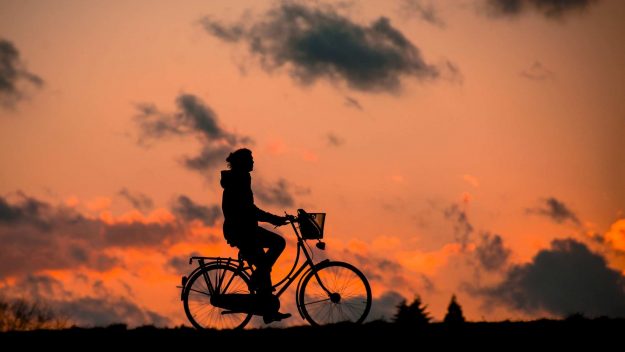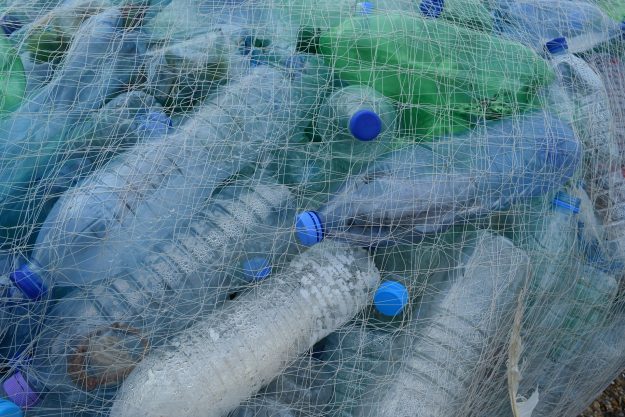Living a sustainable lifestyle shouldn’t be heavy on the pocket. The UK climate chief for the WWF has some tips on how you can lead a greener life.

The number of higher education students across the UK is around 2.3 million and rising, and lessening our environmental impact is important.
It is not just the government’s responsibility to protect the environment and step up climate action, our individual actions can make a significant difference. However, there’s a misconception that living a sustainable lifestyle is expensive. For example, recycled products often cost more, but what’s overlooked is the fact that buying these items will save you money in the long-run.
To help the students across the UK and around the world live sustainably, Gareth Redmond-King, Head of Climate Change, World Wide Fund for Nature (WWF)-UK, shares some budget-friendly practices that students can adopt to ensure a greener world for everyone.
1- Buy local produce

Climate change is affecting our food supply – a recently published report shows its impact on fruit and vegetable growers here in the UK. But how we eat also has a significant impact on emissions, and therefore climate change. The good news is that eating healthily and reducing our impact on the environment go hand in hand.
“A low-emissions diet is one which reduces the amount of meat that we eat whilst eating more plant-based food, both of these tend to make for a healthier diet too. Even better if that food comes from the UK, where if it’s been raised or grown sustainably, it can have lower emissions than food being imported from overseas,” says Redmond-King.
To increase plant-based food in your diet, consider shopping at your local market. The prices are often lower than supermarkets, and are usually grown by local or regional growers. Even better, there is hardly any plastic or packaging!
2- Travel the environment-friendly way

Like food, travel that’s good for you tends to go with low-emissions travel! Cycling and walking have huge health benefits.
“Student towns and neighbourhoods often have better facilities for cycling, precisely because so many students rely on their bike. If there is not enough segregated cycling infrastructure, tell your local council and your MP.” says Redmond-King.
In Cardiff, the bike-sharing facility Nextbike is free for students and is the perfect way for getting around the city. And if, for any reason, you can’t cycle, or walk, then use public transport – it has lower impact on the environment than driving your own vehicle. Whichever you choose – active travel or public transport – it’s definitely cheaper than owning and running a car!
3- #EndPlasticPollution by buying in bulk

Plastic is everywhere! That’s not necessarily a bad thing – it’s a valuable and versatile material. But the sheer quantity of throw-away single-use plastic really is a problem, and we need the government, businesses and individual action to tackle it.
“If we refuse to buy or use the single-use rubbish that we don’t need, then we can have our own impact on the market that churns more and more of this stuff out.” says Redmond-King. “That means things as simple as carrying a reusable tote bag to avoid plastic carrier bags, a refillable water bottle, and your own coffee cup for your daily caffeine fix.”
“But more and more, it’s possible to find plastic-free alternatives – like buying pasta, rice or other dry food in bulk, rather than in small plastic bags from the supermarket.”
Consider shopping at your local Chinese supermarket or Indian grocer, where you can often find import lentils, rice and pastas in bulk. This will cut down the plastic and packaging, while cutting down your spending.
4- Calculate your carbon footprint

Here’s another free tip that you can do in ten minutes. To identify your personal impact on the environment, try this footprint calculator, which will tell you how big your carbon footprint is.
“What that will make clear is that there are lots of things we can do – including what we eat, how we travel, and how we power our homes. But it also flags up how we consume – the ‘stuff’ that we buy that adds to our footprint,” says Gareth Redmond-King.
5- Start thrifting

One of the questions the footprint calculator asks is how much you spend on clothing.
“That’s because our current reliance on ‘fast fashion’ exacerbates the fact that making our clothing already has significant environmental impacts, not least in the land and water required to produce the cotton that’s needed,” says Redmond-King.
“By shopping second-hand, buying less and wearing clothes for longer, we can all help cut that impact.”
Thrifting is a great way to spend less, while lessening your environmental impact. Not only will you find unique, pre-loved articles, but they’re often higher quality and will last longer. Even better, local charity shops will take your money and put it towards a good cause. What is not to love?
